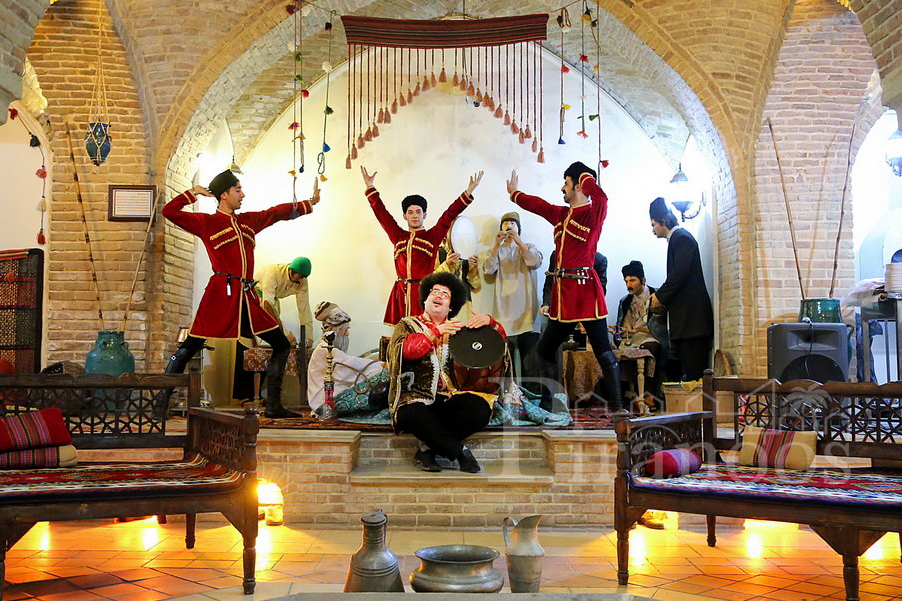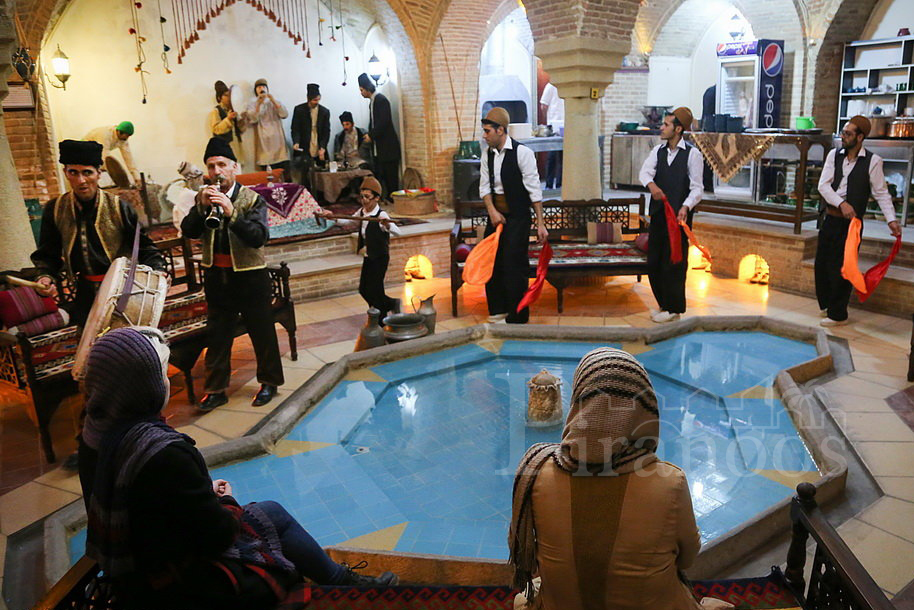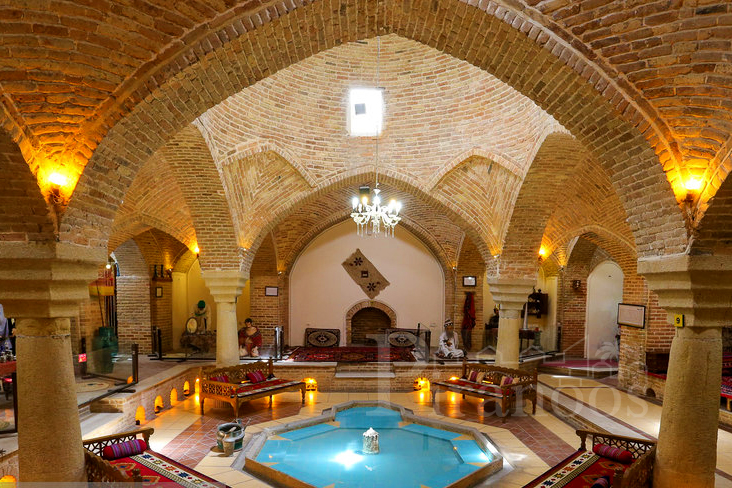Hamedan province has more than 1752 historical and cultural monuments and natural attractions that make it a special and important place in the tourism industry. Due to this importance, 1004 of these works have been registered in the list of National Monuments of Iran. The historical city of Hegmataneh proves that Hamadan is one of the oldest cities in Iran and in the world, since it was the capital of the first Persian Imperial government (the Medes).
Hamedan has many historical and natural attractions. One of the most interesting and fascinating places in the city is the Hamam-e Qal’eh or the Museum of Anthropology. Hamam-e Qal’eh is one of the historical bathhouses of Hamedan province with Iranian- Islamic architecture. The old Hamam-e Qal’eh is also known as Haj Muhammad Saeid bathhouse and located in one of the old and original neighborhoods of Hamedan called Qaleh or Ghashogh Tarashan neighborhood on Shariati Street.

The historic Hamams of each city reflect the culture and history of that city. Because in addition to being able to see the architecture of the public bathhouses, you can also find out about the technical knowledge of the architects of that period and the hygiene characteristics and the cultural features of that time. The city of Hamedan has a variety of historic bathhouses, which are visited by tourists every day.
The spectacular architecture of this historical Hamam (bathhouse) draws many Iranian and foreign tourists here to visit the monument. This Hamam was most likely built in the final years of the Qajar period. It has an area of about 1500 square meters. The Hamam-e Qal’eh was transformed into a museum of anthropology after undergoing major repairs such as repairing exterior walls and restoring interior parts.

The Hamam-e Qal’eh is an anthropological museum, which was opened in 2009. The Hamam-e Qal’eh consists of two parts, the hot section and the cold section, with an octagonal entrance. After crossing the beautiful brick vestibule, first you will see a statue next to the entrance door that simulates someone who used to sit here in the past and take money from people.
This statue is called Pachal. In addition to taking care of the bathhouse, Pachal used to sell the bathing equipment and was one of the main influential bath staff. Then you will enter the cold bath and then the hot bath. In the cold bath there were special platforms for sitting and relaxing, specific spaces for bathing, and areas for traditional celebrations. One of the common ceremonies in the Qal’eh bath was the Hana-bandan (a former Iranian pre-wedding ritual) of the groom, which is still common among Hamadan Turks.
The cold bathroom has become a restaurant over time. You can try the best traditional Hamedan dishes in this traditional restaurant. The hot bathroom can be considered the most interesting section of the building. It was a place for washing and relaxing. Nowadays the hot bath has become the Hamadan Museum of Anthropology. The customs, culture and history of the people of Hamedan are on display at this exhibition. In this area, there is also a place where you can wear colorful traditional clothes and costumes of Hamedan and take photos. A fun way to remember your visit to this amazing historical Hamam!

Everywhere in the bathhouse, a combination of Iranian and Islamic architecture is used to create a spectacular and beautiful atmosphere. There are 2 great stone pillars in this Hamam and the amazing vaulted ceiling with elegant architecture that displays Iranian art and skill in architecture. This bathhouse has separate sections for men and women. Inside the Hamam there is a cozy and traditional café where bands play live music.
Around the Hamam-e Qal’eh in Hamedan, there are several spectacular places that tourists can visit after visiting this historical bathhouse.